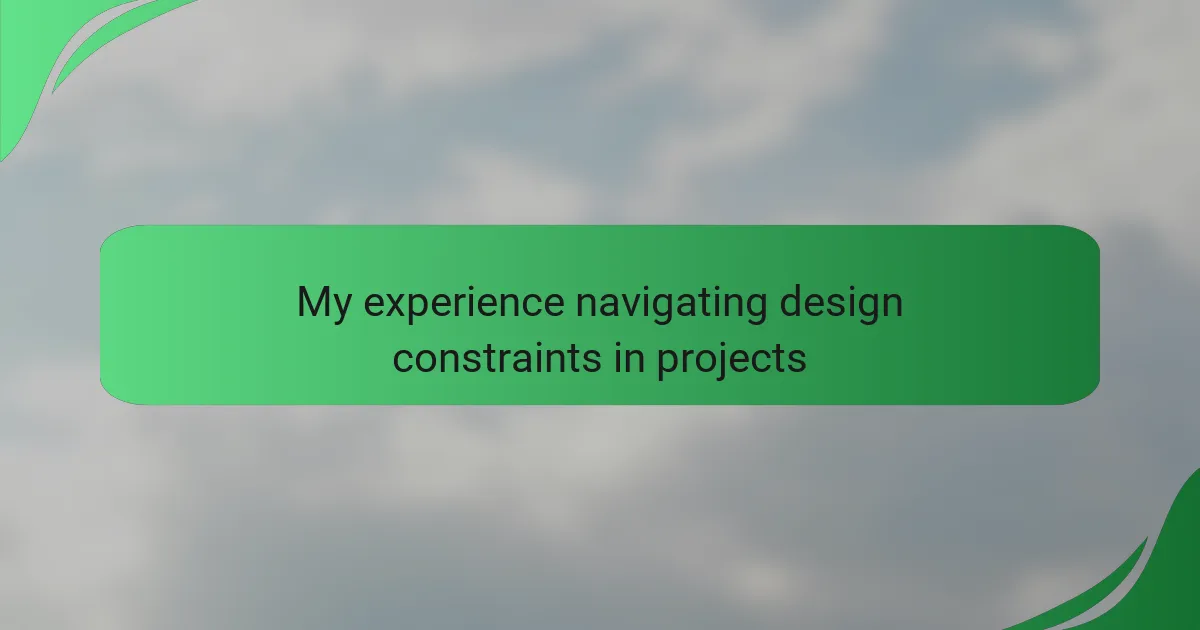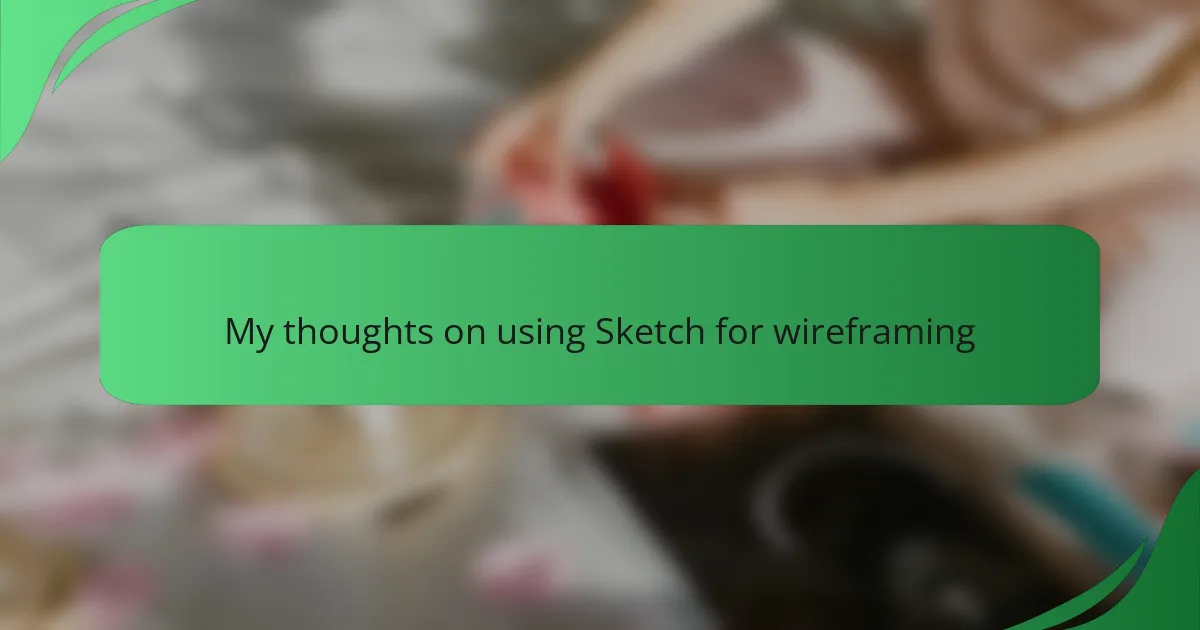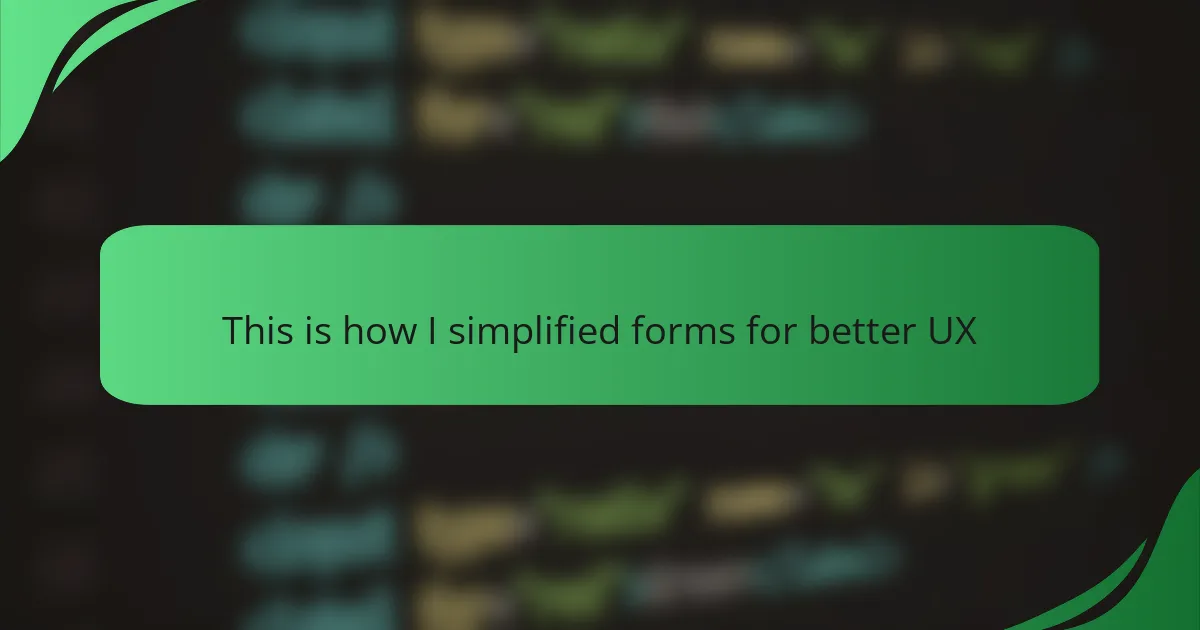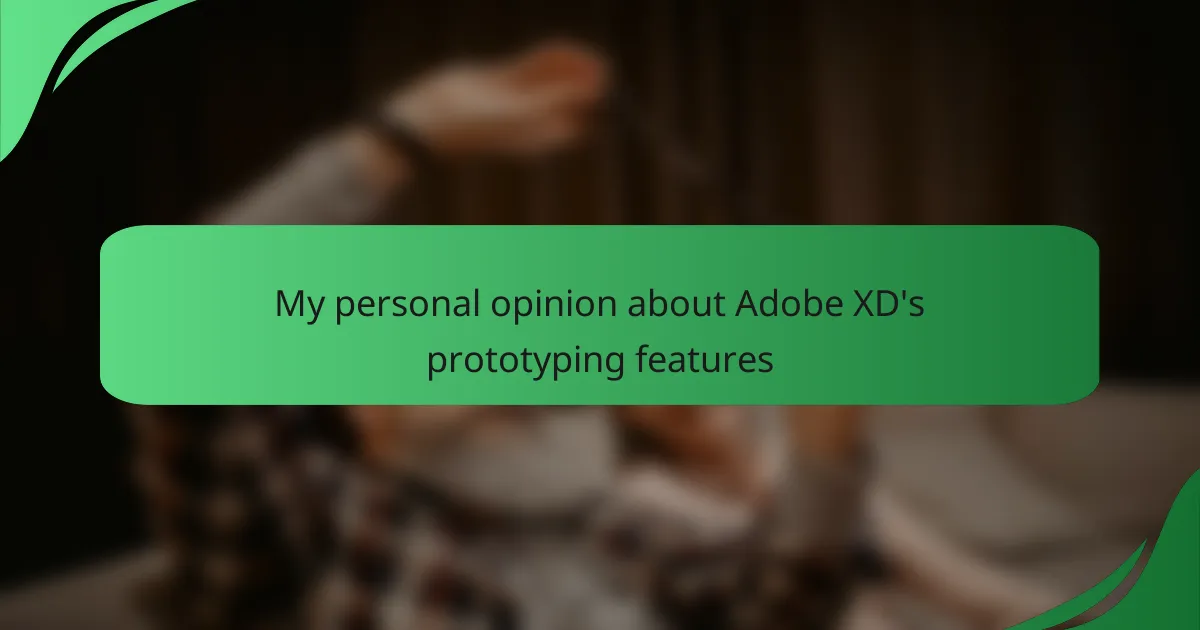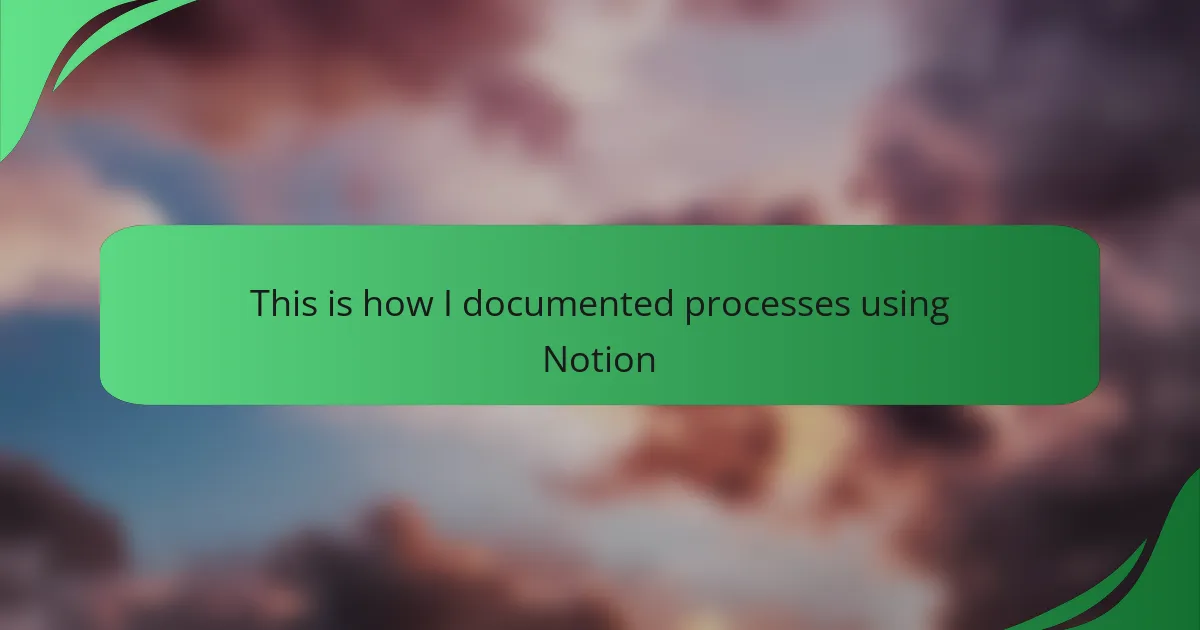Key takeaways
- Embrace design constraints as opportunities for creativity, leading to innovative solutions.
- Focus on core user needs and prioritize essential features for better usability.
- Utilize collaboration with cross-functional teams to refine design outcomes and gather diverse insights.
- Implement iterative processes and incorporate user feedback early for improved designs.
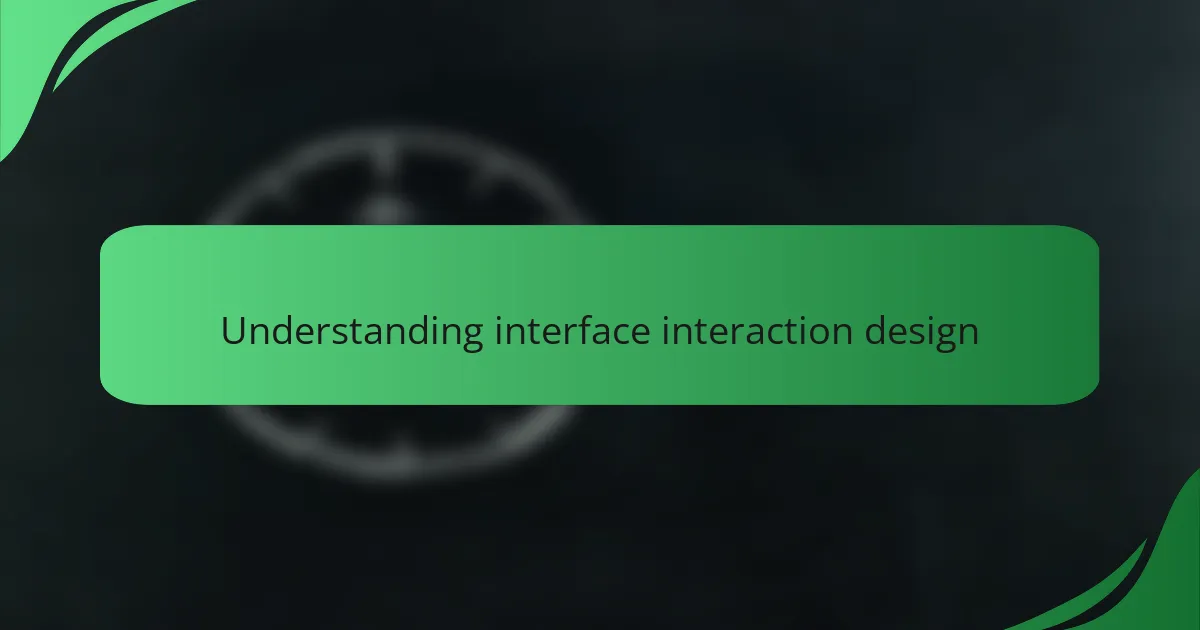
Understanding interface interaction design
Interface interaction design is all about how users engage with digital products. I’ve found that understanding the user’s journey and their needs is crucial. For example, in one project, I had to consider how users would navigate a complex dashboard while staying focused on their tasks. This experience taught me that simplicity can often be the best solution amidst design constraints.
Every project comes with its set of limitations, whether it’s technical restrictions, budget constraints, or tight timelines. Embracing these limitations has been enlightening for me. By focusing on what truly matters to the user, I learned to prioritize features that enhance usability, even if it meant letting go of some ideas I was passionate about. Here’s what I’ve discovered can help navigate these constraints:
- Identify core user needs before diving into design.
- Prioritize features based on their impact and feasibility.
- Create prototypes to test concepts early on.
- Collaborate closely with developers to understand technical limitations.
- Be open to feedback and ready to iterate based on user testing.
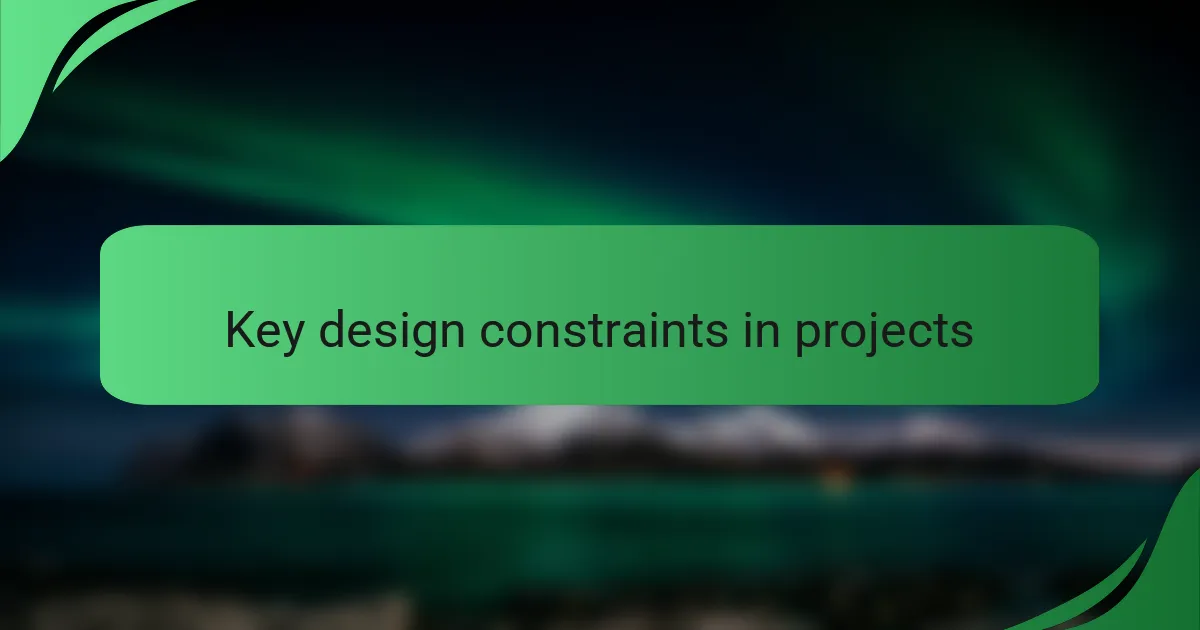
Key design constraints in projects
Throughout my experience in interface interaction design, I’ve often encountered various design constraints that shape how I approach projects. Whether it’s limited time frames or the need to accommodate specific user needs, these constraints can feel daunting, but they also spark my creativity. For instance, during a recent project, I had to deliver a user-friendly interface within just two weeks. At first, the pressure was intense, but I discovered that embracing these limitations led to innovative solutions I might not have explored otherwise.
In navigating these challenges, I’ve identified several key design constraints that consistently arise:
- Time Limitations: Projects often come with tight deadlines, requiring quick, efficient design decisions.
- Budget Restrictions: Limited financial resources force prioritization, often pushing for essential features over nice-to-haves.
- User Needs: Focusing on target users’ specific requirements can limit certain design choices but ultimately enhances usability.
- Technical Limitations: Working within the capabilities of existing technologies or platforms can shape the overall aesthetic and functionality.
- Brand Guidelines: Adhering to established branding standards can sometimes restrain creativity but also ensures consistency across interfaces.
Each constraint has its challenges, but they often serve as a catalyst for thoughtful, impactful design.
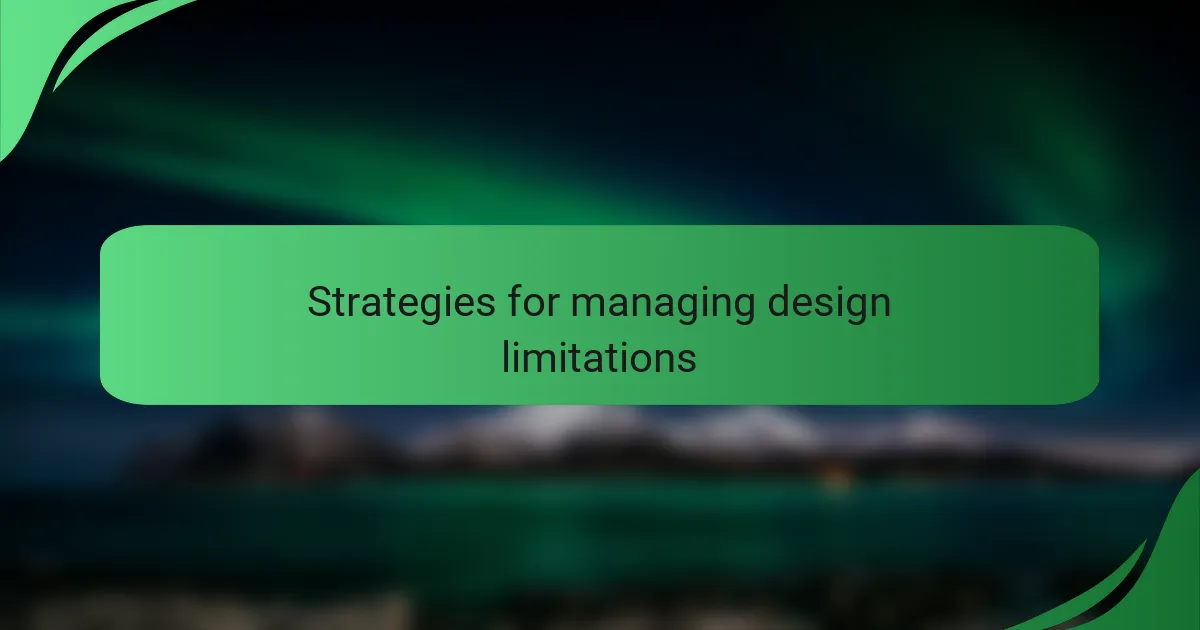
Strategies for managing design limitations
When navigating design constraints, one effective strategy is to embrace a mindset of creativity within limitations. I often find that constraints can actually spark innovative solutions I might not have considered otherwise. For instance, when I was tasked with a project that had rigid brand guidelines, I focused on subtle design tweaks that still respected the brand while enhancing user experience, leading to a refreshingly unique interface.
Another strategy is to prioritize user needs above all else. I remember being in a project where feature requests conflicted with technical limitations, and I had to drill down to what users truly valued. By simplifying the interface and focusing on core functionalities, we were able to deliver a product that users loved, showing that sometimes less really is more. Clear communication with stakeholders is equally crucial; keeping everyone in the loop helps build consensus and prevents frustration down the line.
Here’s a comparison table highlighting different strategies for managing design limitations:
| Strategy | Description |
|---|---|
| Mindset Shift | Viewing constraints as sources of creativity. |
| User Prioritization | Focusing on essential user needs to guide design choices. |
| Clear Communication | Maintaining transparency to align stakeholders on design direction. |
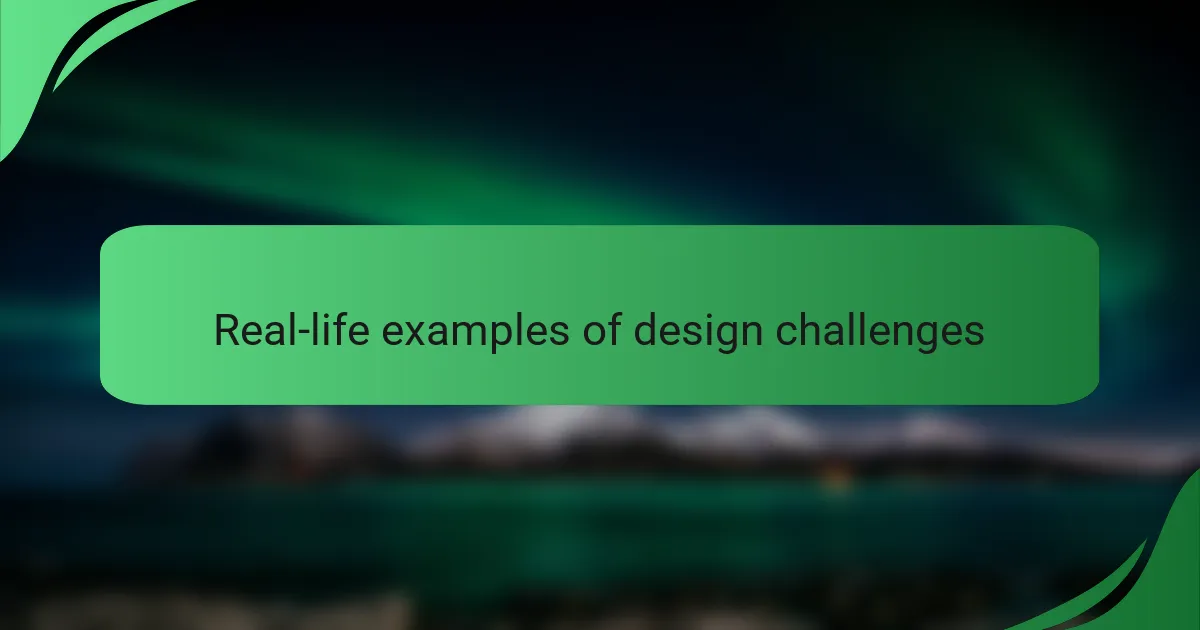
Real-life examples of design challenges
One memorable example of a design challenge I faced involved a project aimed at revamping a mobile app for educational purposes. The client had a strict budget and clear constraints on features, which made it seem impossible to deliver a dynamic user experience. However, by conducting user interviews and observing actual usage patterns, I discovered that enhancing the navigation flow with simple gestures could significantly improve engagement—without the need for an expensive overhaul.
Another instance arose during the redesign of a corporate website, where the company’s outdated branding limited our color palette and font choices. Initially, I felt frustrated because these constraints stifled my creativity. I soon realized that by focusing on content organization and whitespace, I could create an inviting layout that still adhered to the brand’s tired look, proving the importance of strategic prioritization in design.
A common challenge I encounter is user feedback that conflicts with technical capabilities. In one project, users wanted multiple interactive elements, but the existing framework couldn’t support them all. This situation pushed me to rethink how to streamline those interactions without compromising experience. It was an excellent reminder that flexibility and open-mindedness can often lead to creative workarounds that delight users while respecting the boundaries of technology.
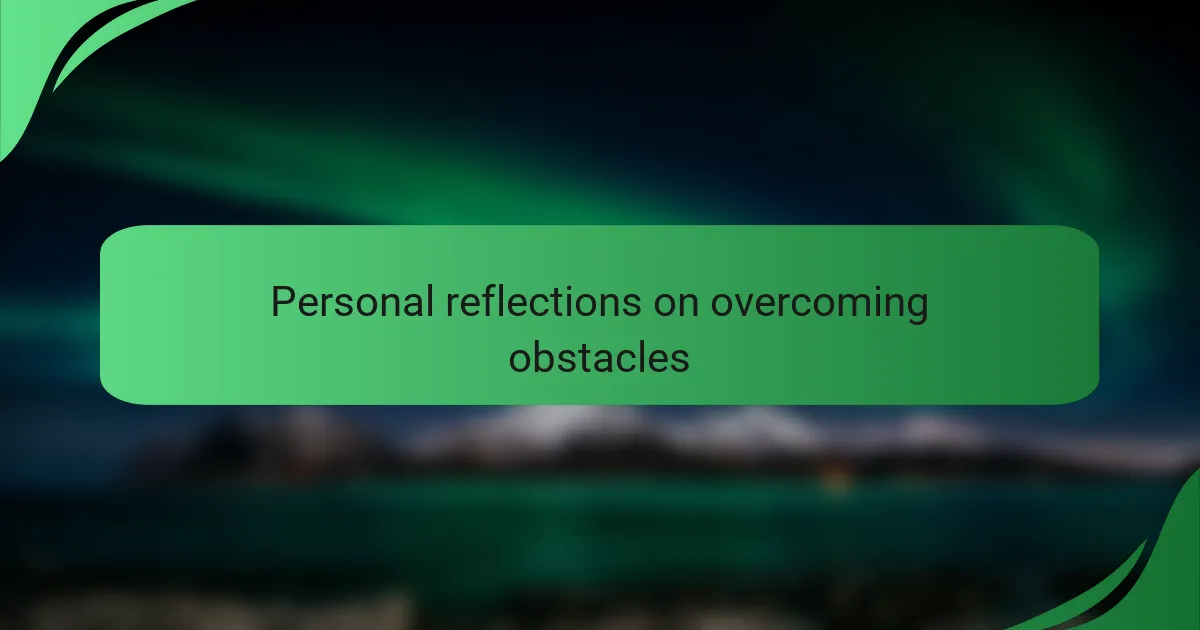
Personal reflections on overcoming obstacles
Navigating design constraints is often a journey that tests both creativity and resolve. I vividly recall a project where the client’s strict brand guidelines felt stifling at first. It was frustrating to feel like my creative potential was limited, but I soon discovered that these constraints could actually serve as a framework for innovation. Instead of seeing them as barriers, I learned to view them as challenges that pushed me to think outside the box, ultimately leading to a design that was both impactful and aligned with the brand’s identity.
Reflecting on these experiences, I’ve compiled a few key takeaways that can help others facing similar challenges:
- Embrace limitations as opportunities for creativity.
- Collaborate with stakeholders to find middle ground in expectations.
- Use constraints to sharpen your focus and streamline decisions.
- Prioritize user needs over personal design preferences.
- Document your thought process to maintain clarity during design iterations.
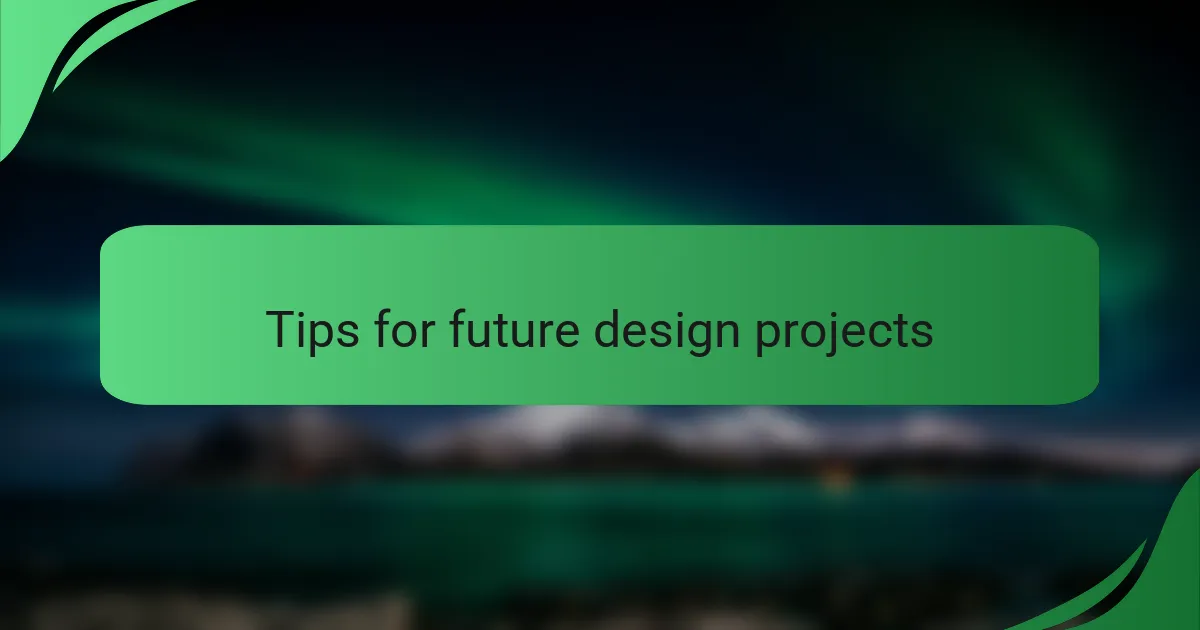
Tips for future design projects
One crucial tip for future design projects is to always start with user personas. By understanding the target audience on a deeper level, I’ve found that it becomes easier to tailor solutions that resonate with their needs. For instance, in a recent project, creating detailed personas helped guide our design decisions, ensuring that every feature directly addressed user pain points. This early focus made a world of difference.
Another essential aspect is to embrace an iterative process. I’ve personally witnessed the value of refining designs through continuous feedback loops. In a rush to meet deadlines in one project, I initially neglected this step. The result? An interface that missed the mark with users. Learning to incorporate feedback early and often transformed the project, leading to improvements that ultimately delighted the end-users.
Lastly, don’t underestimate the power of collaboration. I thrive when I involve cross-functional teams in the design process. In one memorable project, bringing developers, marketers, and even users into brainstorming sessions unveiled insights I might not have considered alone. This collaborative spirit fostered a more holistic design that aligned with both business objectives and user needs, proving that teamwork can genuinely unlock creativity.
